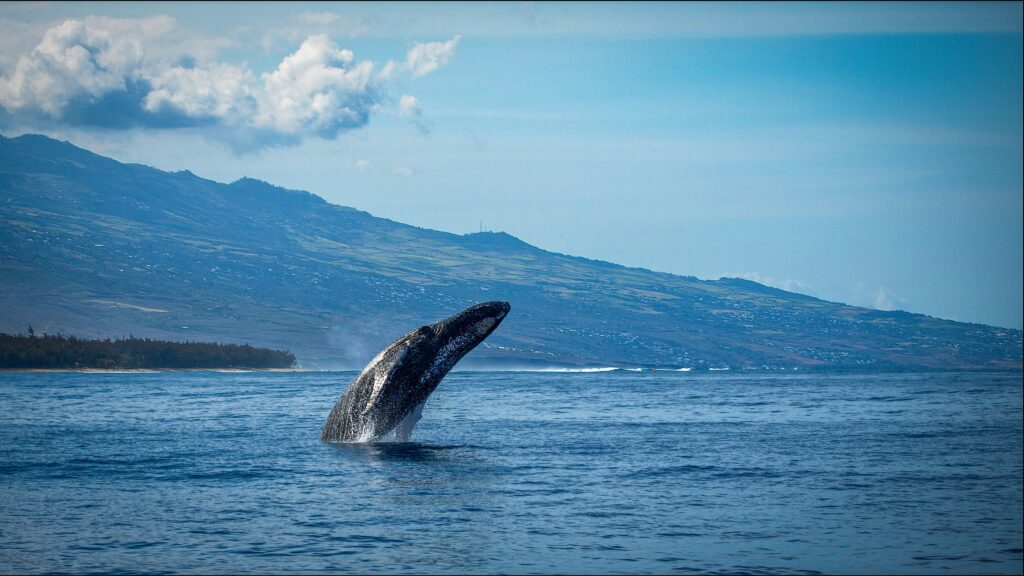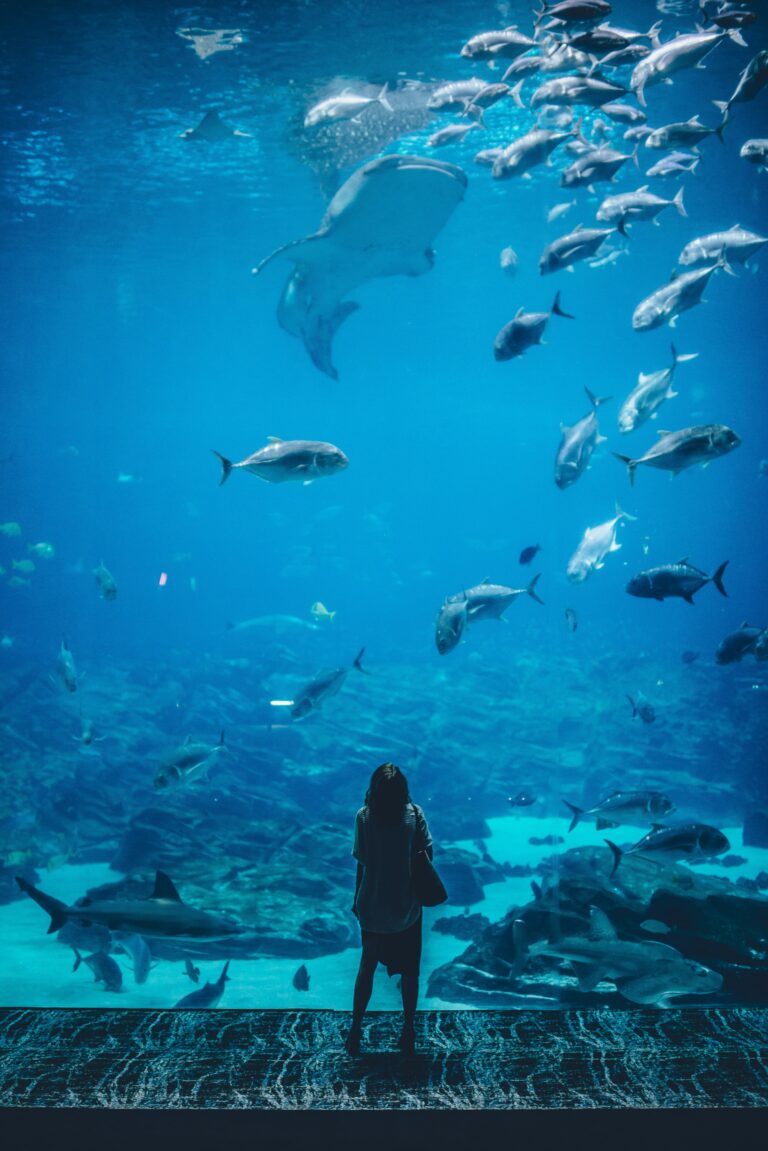In the vast expanse of the world’s oceans, few creatures command the same awe and reverence as the blue whale. As the largest animal ever known to have lived on Earth, these majestic giants inspire both wonder and fascination. In this article, we delve into the world of blue whales, exploring their remarkable anatomy, behavior, conservation status, and the efforts being made to ensure their survival in our ever-changing world.
Physical Characteristics
Blue whales, the largest animals ever known to have lived on Earth, exhibit a remarkable array of physical characteristics. These massive marine mammals belong to the baleen whale suborder and are distinguished by their immense size, streamlined bodies, and distinct blue-gray coloration. Here are some key physical attributes of blue whales:
1. Size and Shape
Blue whales typically reach lengths of up to 100 feet (30 meters) and can weigh as much as 200 tons (181 metric tonnes). Their elongated bodies are streamlined for efficient movement through water, tapering to a narrow tail fluke. This streamlined shape minimizes drag and enables blue whales to reach impressive speeds despite their immense size.
2. Coloration
The name “blue whale” is derived from the distinctive blue-gray coloration of their skin, which appears mottled and can vary in shade depending on factors such as age and location. The ventral side of the body often features lighter pigmentation, while the dorsal side tends to be darker. Additionally, patches of lighter gray or white may be present, particularly on the underside of the flippers.
3. Blubber Layer
Beneath the skin, blue whales possess a thick layer of blubber, which serves multiple purposes. This insulating layer helps regulate body temperature, provides buoyancy, and stores energy reserves essential for long migrations and periods of fasting. The blubber layer can make up as much as 20-30% of the whale’s total body mass.
4. Baleen Plates
Blue whales are equipped with baleen plates, which are composed of keratin – the same material found in human fingernails and hair. These plates act as a filter-feeding mechanism, allowing blue whales to strain vast quantities of small prey, such as krill, from seawater. The baleen plates hang from the upper jaw in rows, forming a flexible fringe that facilitates efficient feeding.
5. Dorsal Fin and Flippers
Unlike some other whale species, blue whales possess relatively small dorsal fins, positioned far back on the body near the tail region. These fins are generally triangular in shape and can vary in size among individuals. Additionally, blue whales have long, narrow flippers that aid in steering and stabilization while swimming.
Behavior and Communication
Blue whales are fascinating creatures known for their distinct behaviors and sophisticated communication methods. From their feeding habits to intricate migration patterns and vocalizations, these behaviors play a crucial role in the survival and social dynamics of the species.
A. Feeding Habits
Blue whales are primarily filter feeders, consuming vast quantities of tiny planktonic organisms such as krill. They employ a method known as “lunge feeding” to capture prey in large gulps. This involves accelerating toward a concentration of krill with their mouths wide open, engulfing thousands of gallons of water along with the prey. The baleen plates then act as a sieve, filtering out the water while retaining the krill for consumption. Blue whales are capable of consuming up to 4 tons (3.6 metric tonnes) of krill per day during the feeding season.
B. Migration Patterns
Migration is a crucial aspect of blue whale behavior, driven by the availability of food and reproductive needs. These marine giants undertake some of the longest migrations of any mammal, traveling thousands of miles between feeding and breeding grounds. In the Northern Hemisphere, blue whales typically migrate from cold, nutrient-rich polar waters where they feed to warmer tropical or subtropical regions where they breed and give birth. Similarly, in the Southern Hemisphere, they migrate from Antarctic waters to areas such as the Indian Ocean or South Pacific.
C. Vocalizations and Communication
Blue whales are renowned for their complex vocalizations, which serve various purposes including navigation, locating food, and communication with other whales. Their calls can travel for hundreds of miles underwater and are characterized by low-frequency sounds, often below the threshold of human hearing. These calls include moans, groans, and pulses, with each serving a specific function. While the precise meanings of these vocalizations are not fully understood, research suggests they play a vital role in maintaining social bonds, coordinating group movement, and possibly even attracting mates during the breeding season.

Conservation Status
Blue whales, once heavily exploited by commercial whaling activities, now face a range of modern threats that challenge their survival. However, concerted conservation efforts offer hope for the future of these magnificent marine mammals.
A. Historical Exploitation
Historically, blue whales were indiscriminately hunted for their blubber, oil, and baleen during the peak of the whaling industry in the 19th and early 20th centuries. The introduction of industrial whaling technologies, such as explosive harpoons and factory ships, led to a catastrophic decline in blue whale populations. By the mid-20th century, it’s estimated that over 360,000 blue whales were killed, decimating their numbers by an alarming degree. This exploitation drastically reduced blue whale populations across all major ocean basins and pushed them to the brink of extinction.
B. Current Threats
Despite the cessation of commercial whaling operations targeting blue whales following the implementation of the International Whaling Commission’s moratorium in 1986, these marine giants still face significant threats in modern times. One of the primary contemporary threats is collisions with large vessels, such as cargo ships and oil tankers, which can result in fatal injuries or even death for blue whales. Additionally, entanglement in fishing gear, including nets and lines, poses a serious risk to blue whales, potentially leading to injuries, decreased mobility, and ultimately death. Habitat degradation, pollution, climate change, and noise pollution from human activities further exacerbate the challenges faced by blue whales, impacting their health, reproductive success, and overall survival.
C. Conservation Efforts
In response to the urgent need to protect blue whales and other cetacean species, numerous conservation efforts have been implemented on both national and international levels. These initiatives include the establishment of marine protected areas (MPAs) and sanctuaries specifically designated to safeguard critical habitats for blue whales. Additionally, regulations and guidelines aimed at mitigating vessel strikes and reducing the risk of entanglement in fishing gear have been introduced in various regions. Collaborative research efforts focused on understanding blue whale behavior, ecology, and population dynamics also inform conservation strategies and management decisions. Public awareness campaigns and educational outreach programs play a crucial role in fostering stewardship and promoting responsible environmental practices to ensure the long-term survival of blue whales and their marine ecosystems.
VIDEO CREDITS SPZ
FAQs
Q. What is the average size of a blue whale?
A. The average size of a blue whale is around 82 to 105 feet (25 to 32 meters) in length, with females generally being larger than males.
Q. What do blue whales eat?
A. Blue whales primarily feed on tiny shrimp-like animals called krill. They are filter feeders, using their baleen plates to strain krill from the water.
Q. How much krill can a blue whale consume in a day?
A. Blue whales are known to consume an impressive amount of krill, ranging from 2,000 to 4,000 pounds (900 to 1,800 kilograms) per day during the feeding season.
Q. What is the lifespan of a blue whale?
A. The average lifespan of a blue whale is estimated to be around 70 to 90 years.
Q. What is the loudest sound made by a blue whale?
A. Blue whales are known for their powerful vocalizations, and the loudest sound they produce is often referred to as the “song” which can reach up to 188 decibels.
Q. How fast can blue whales swim?
A. Blue whales are not known for their speed; they typically cruise at a speed of 5 miles per hour (8 kilometers per hour). However, they can reach speeds of up to 20 miles per hour (32 kilometers per hour) in short bursts if needed.
Conclusion
As stewards of our planet, it is our responsibility to safeguard the future of these magnificent creatures. Through concerted conservation efforts, education, and awareness, we can ensure that the majestic giants of the ocean, the blue whales, continue to roam the seas for generations to come. Let us stand together in awe and admiration of these incredible beings, and let their presence remind us of the importance of preserving the rich diversity of life that inhabits our oceans.
UP NEXT
Ocean Conservation and the Preservation of Coastal Mangrove Forests



